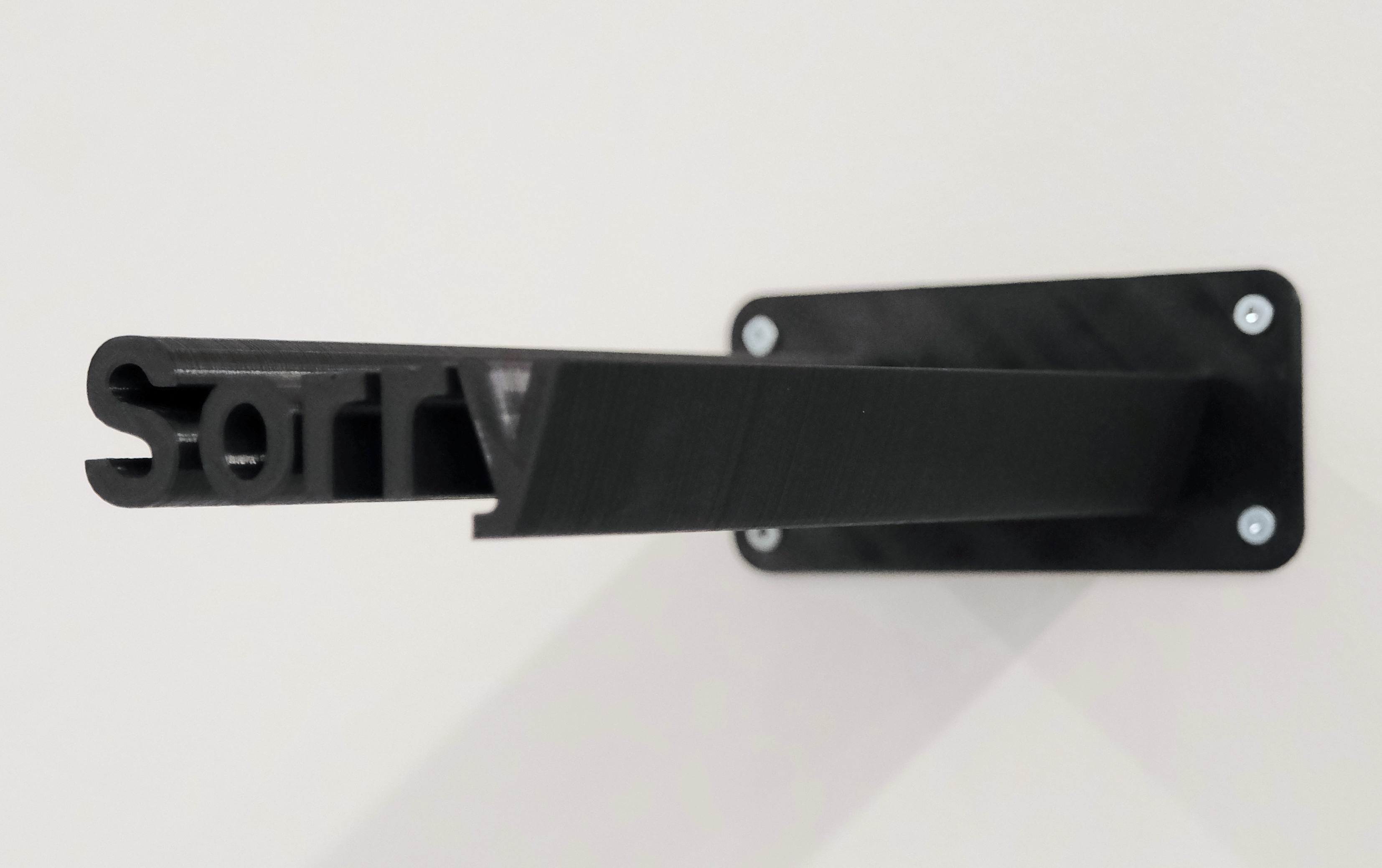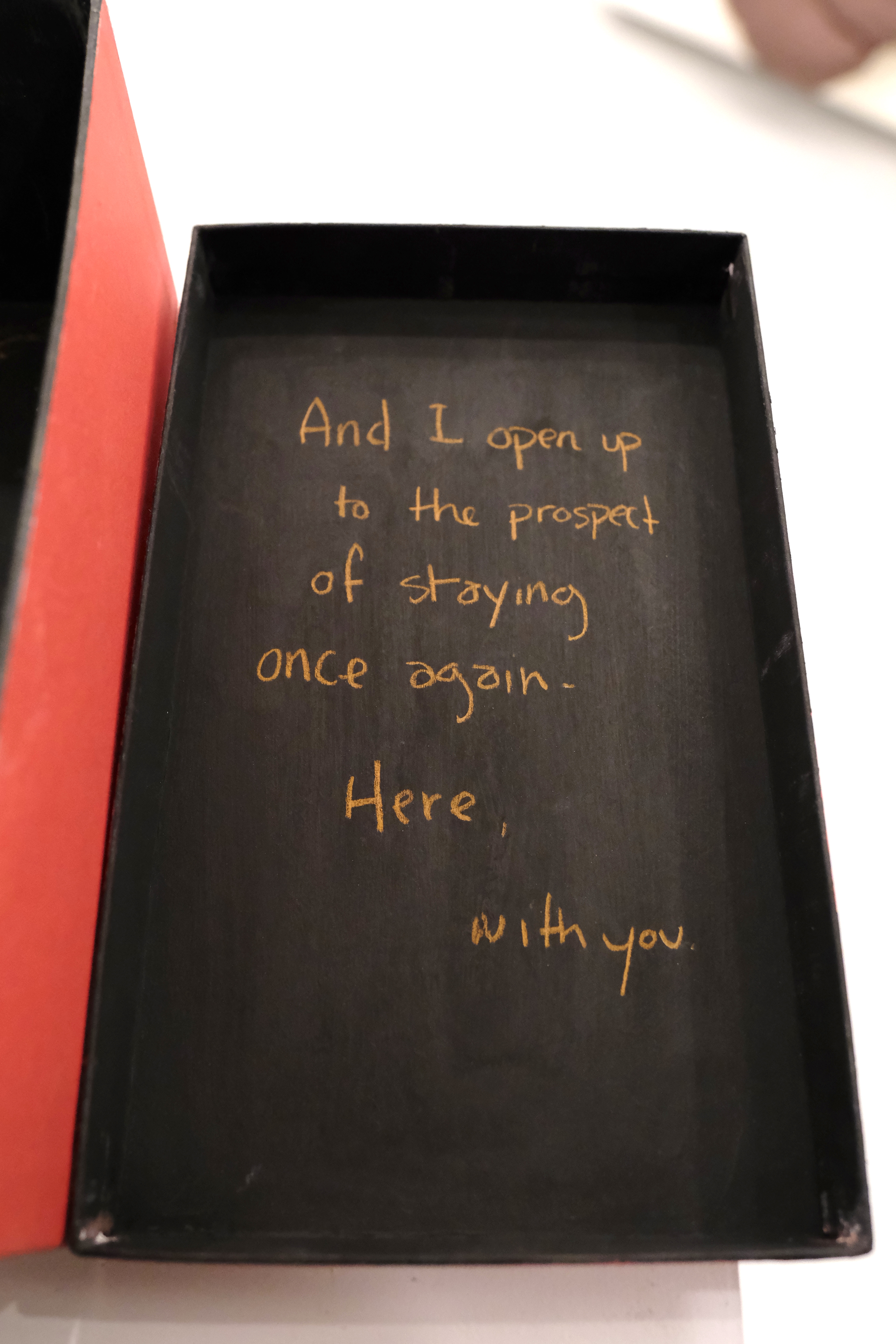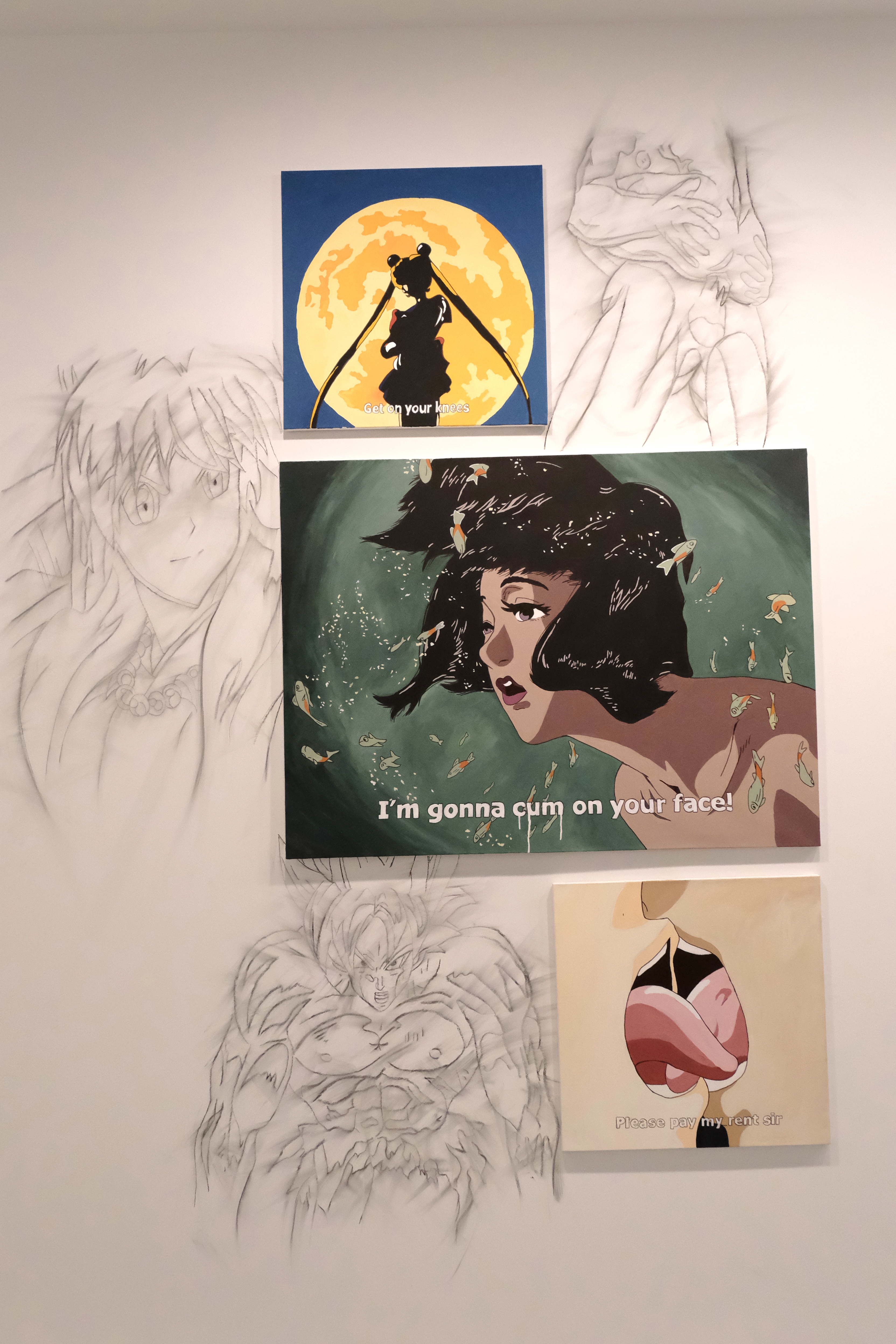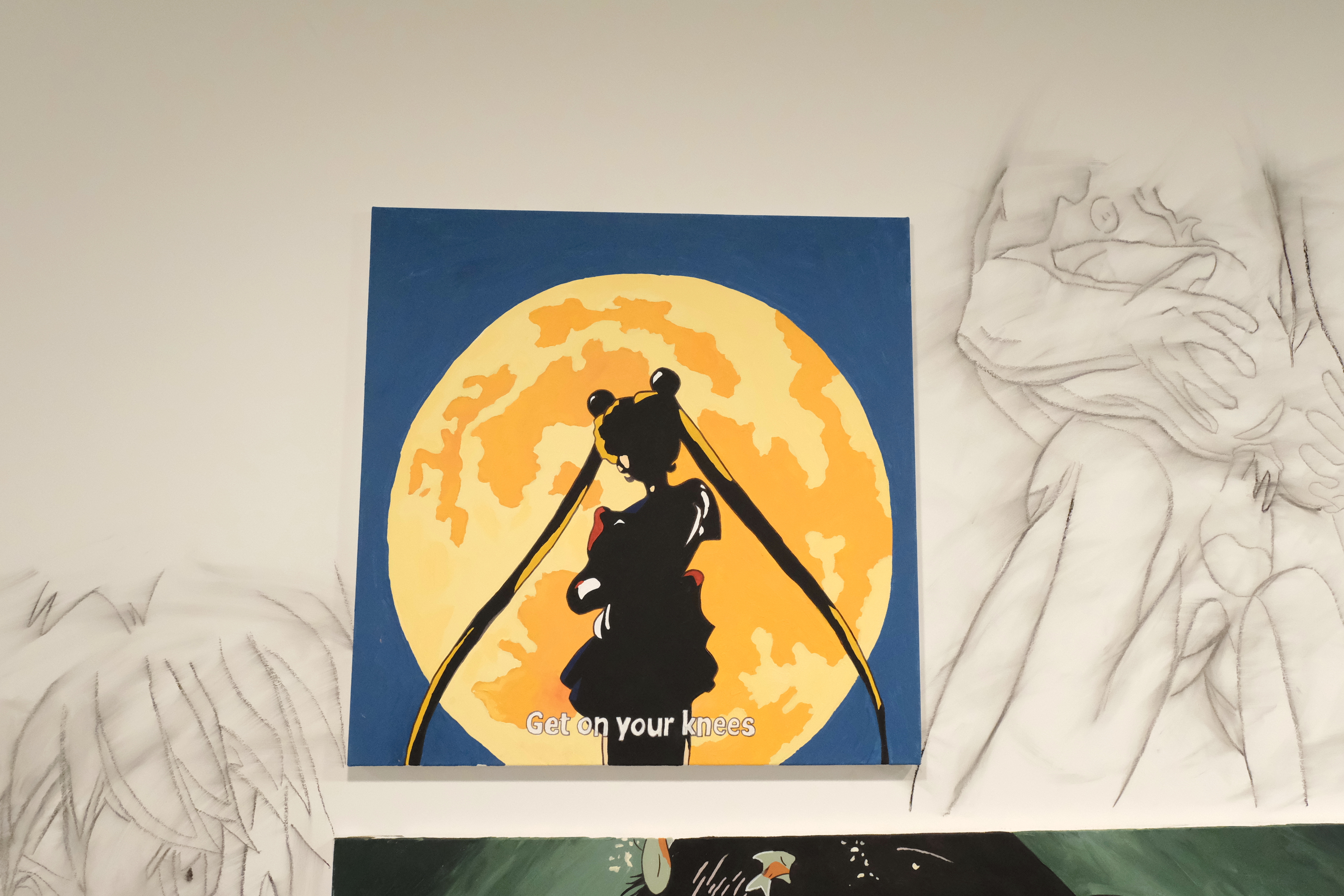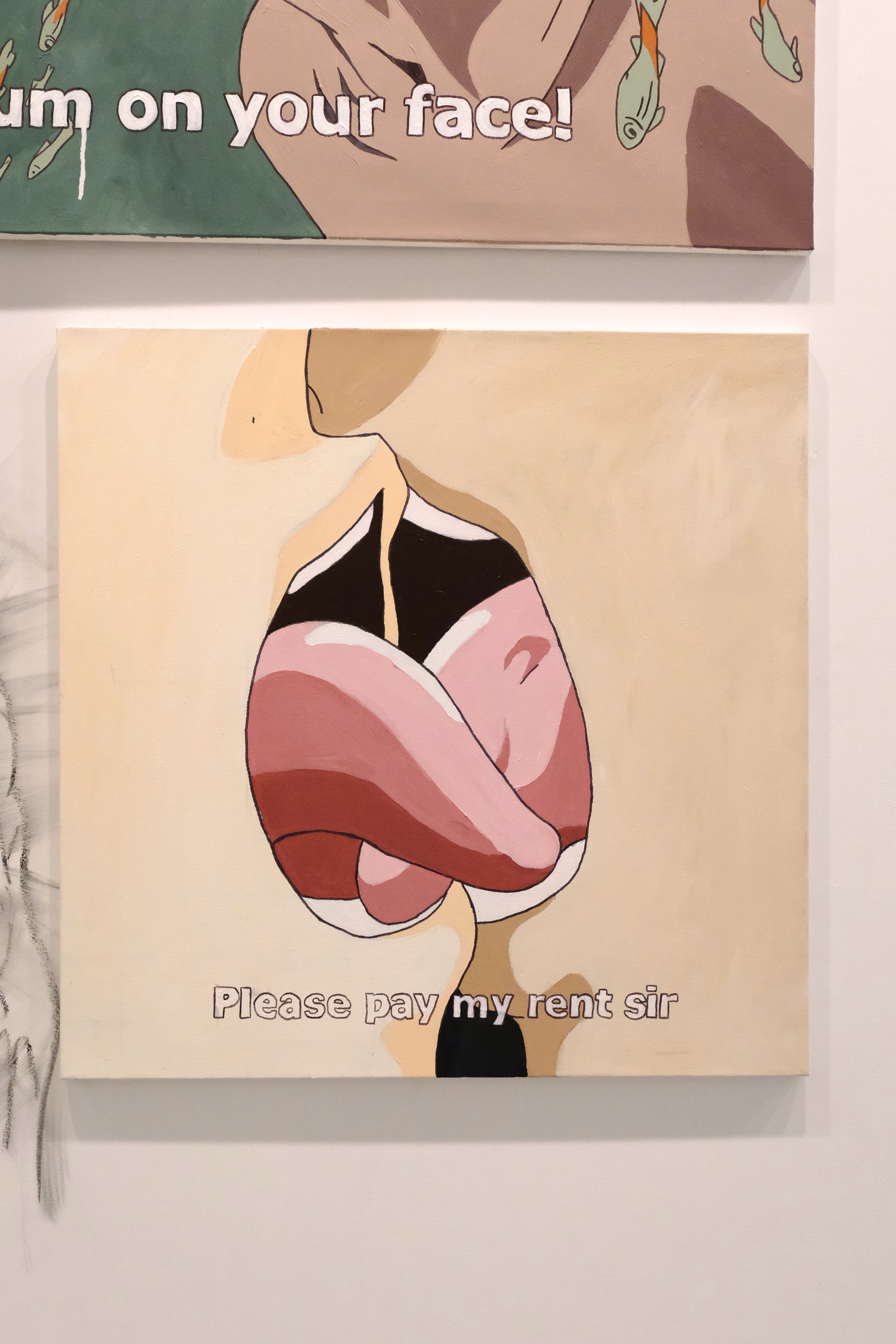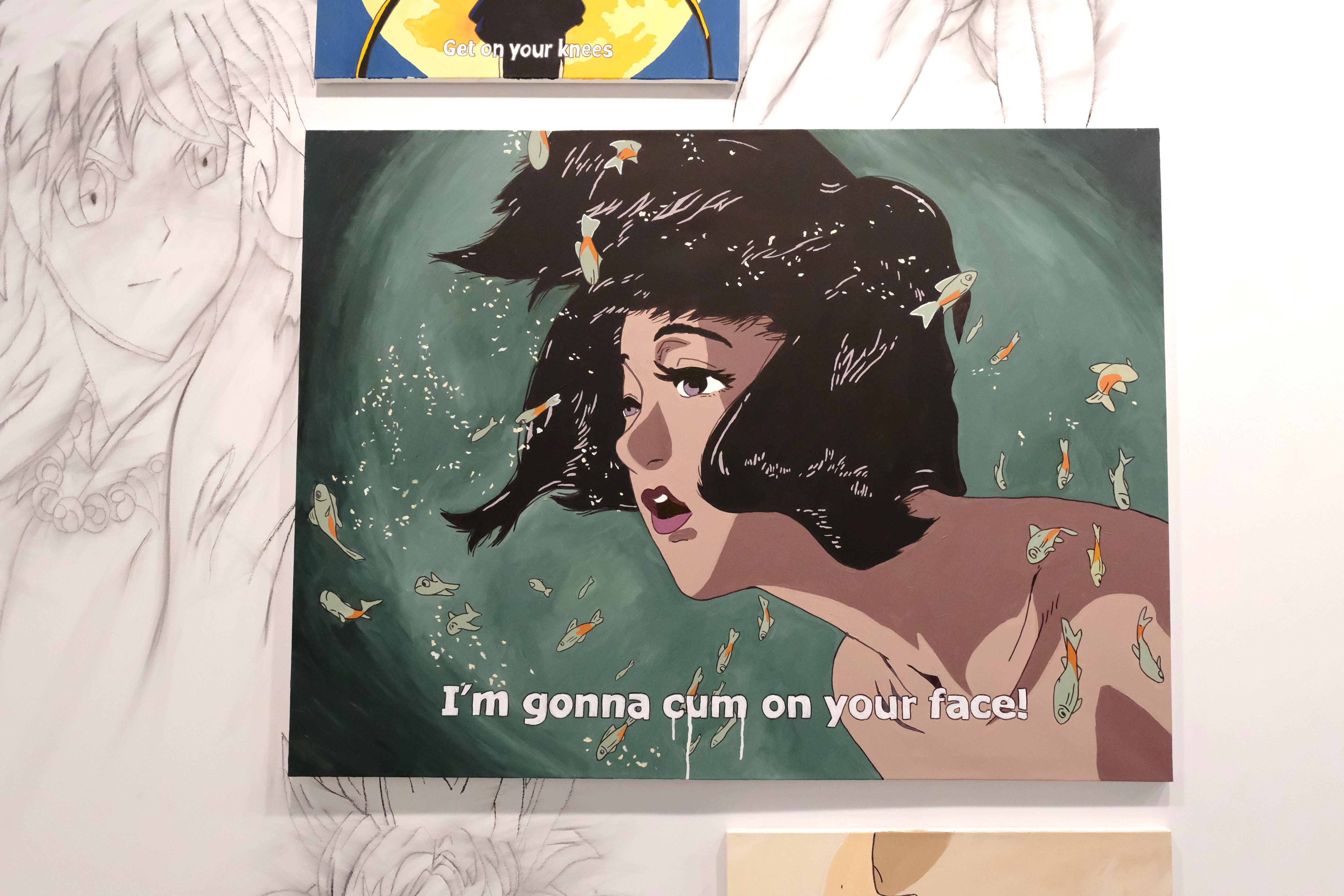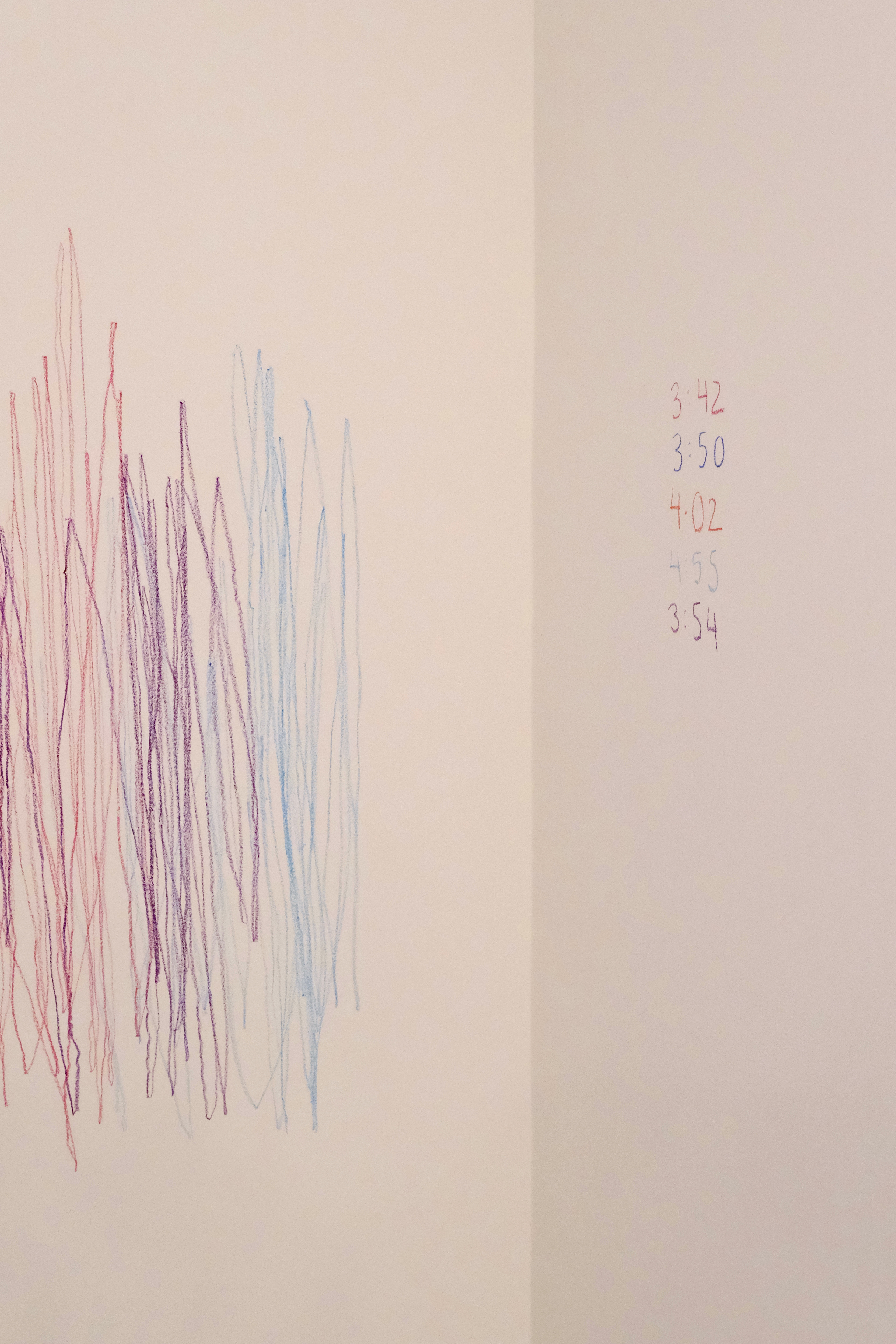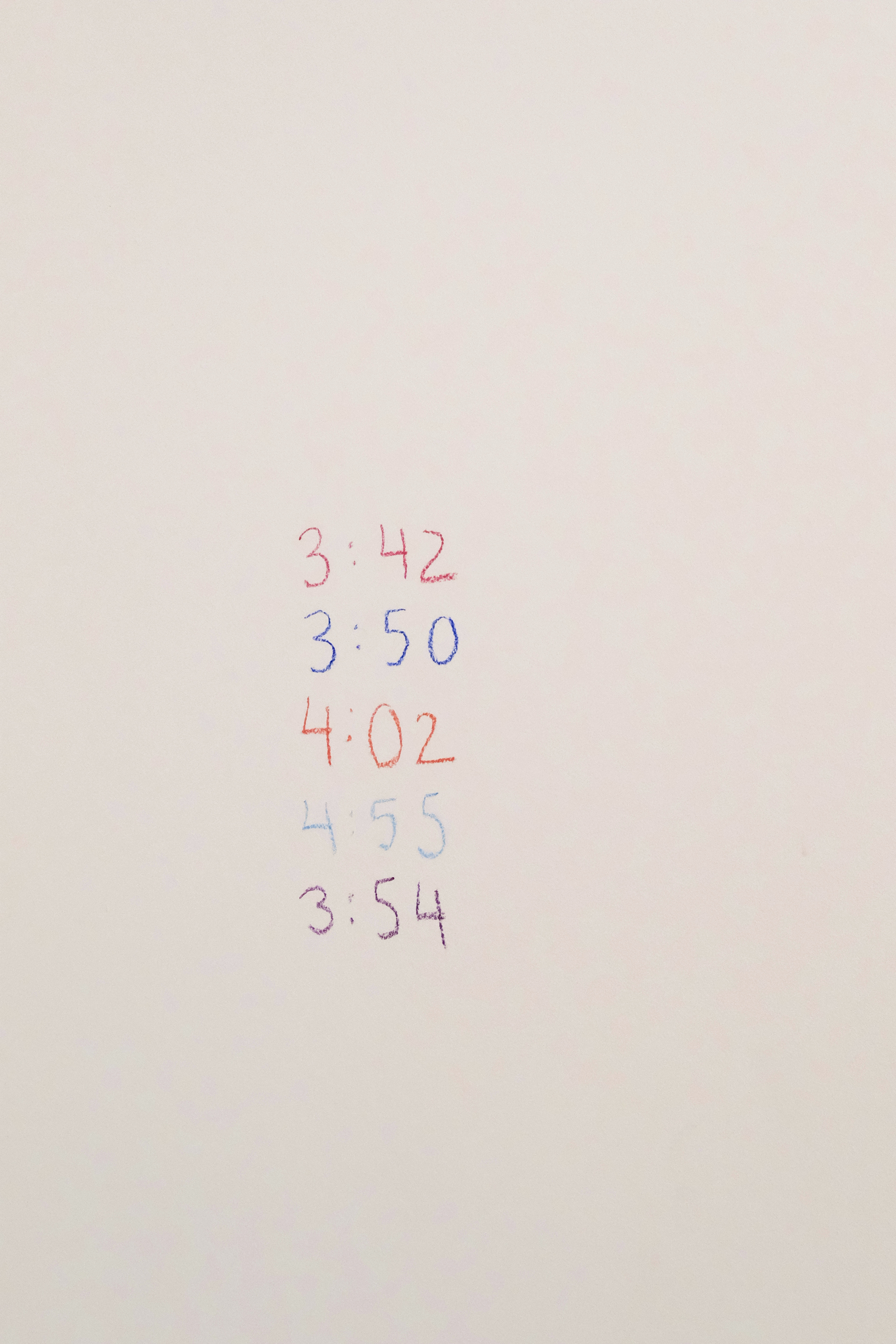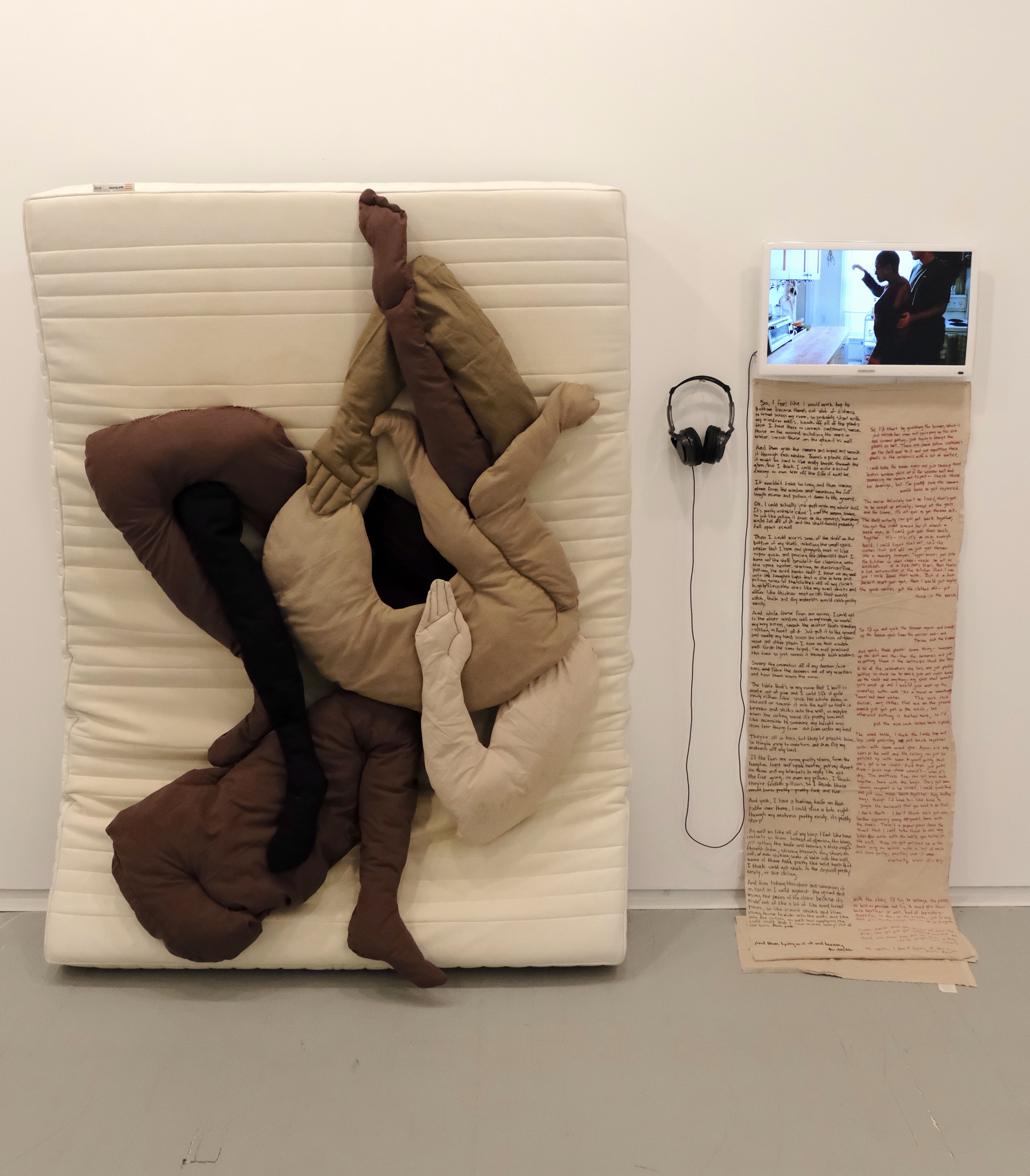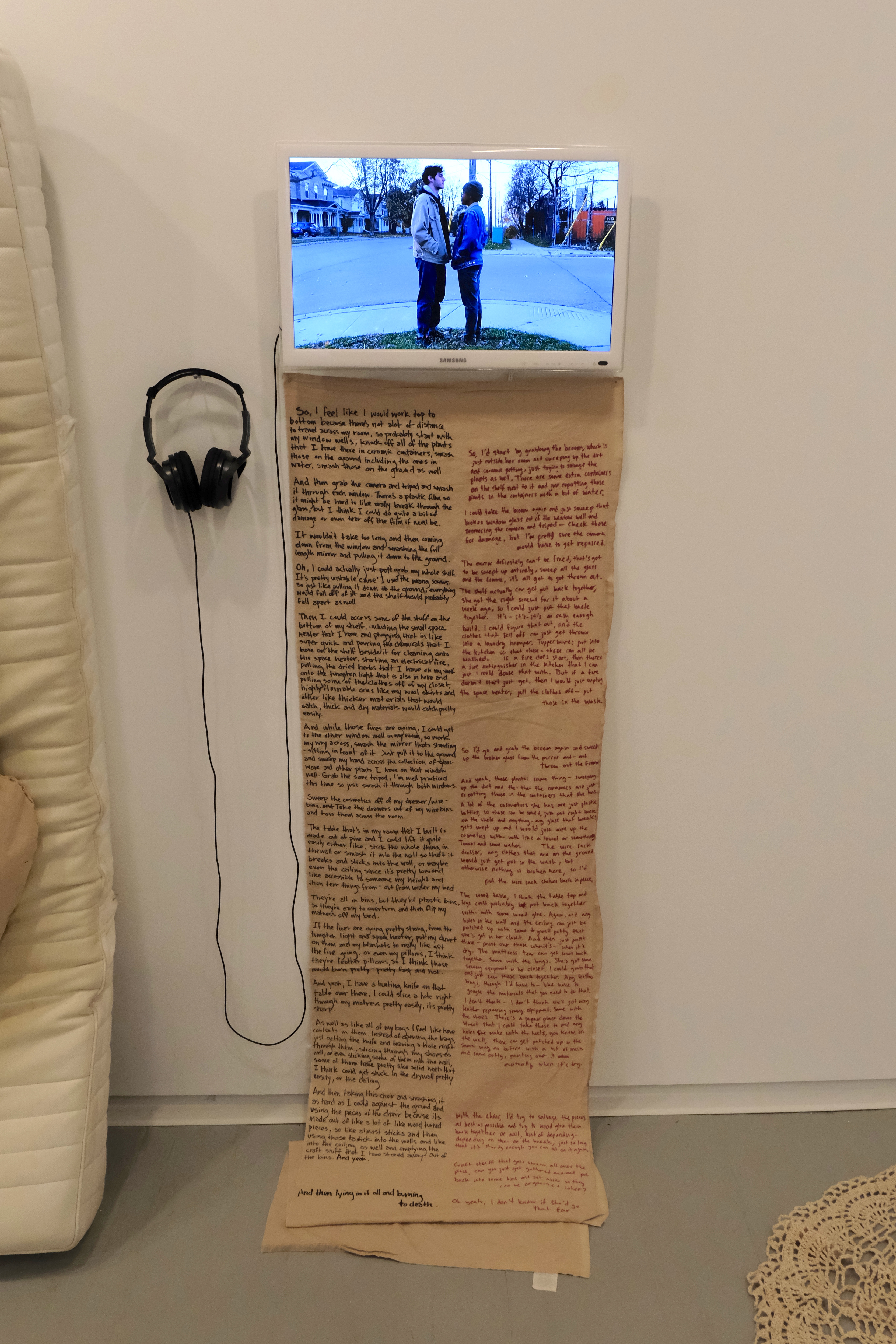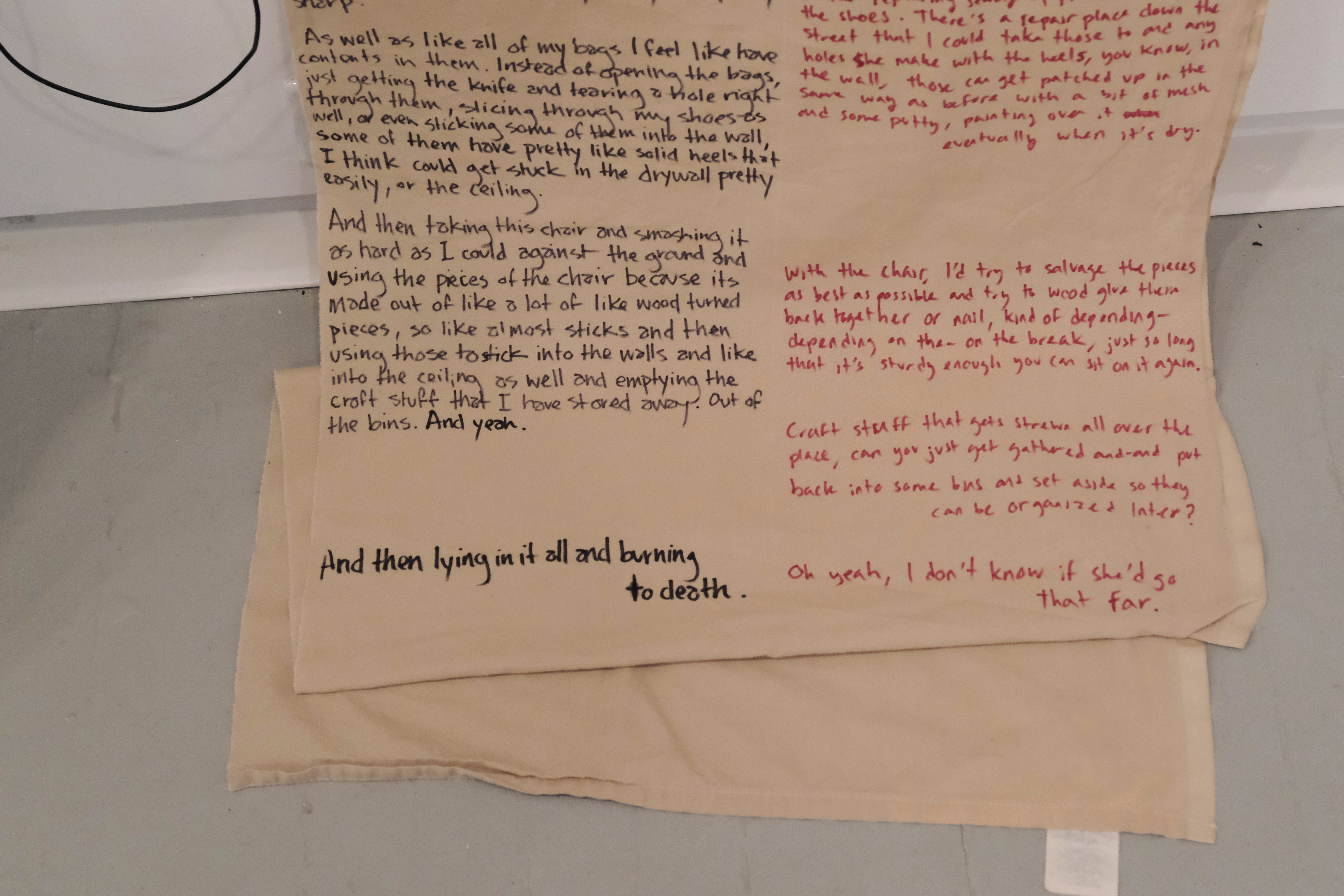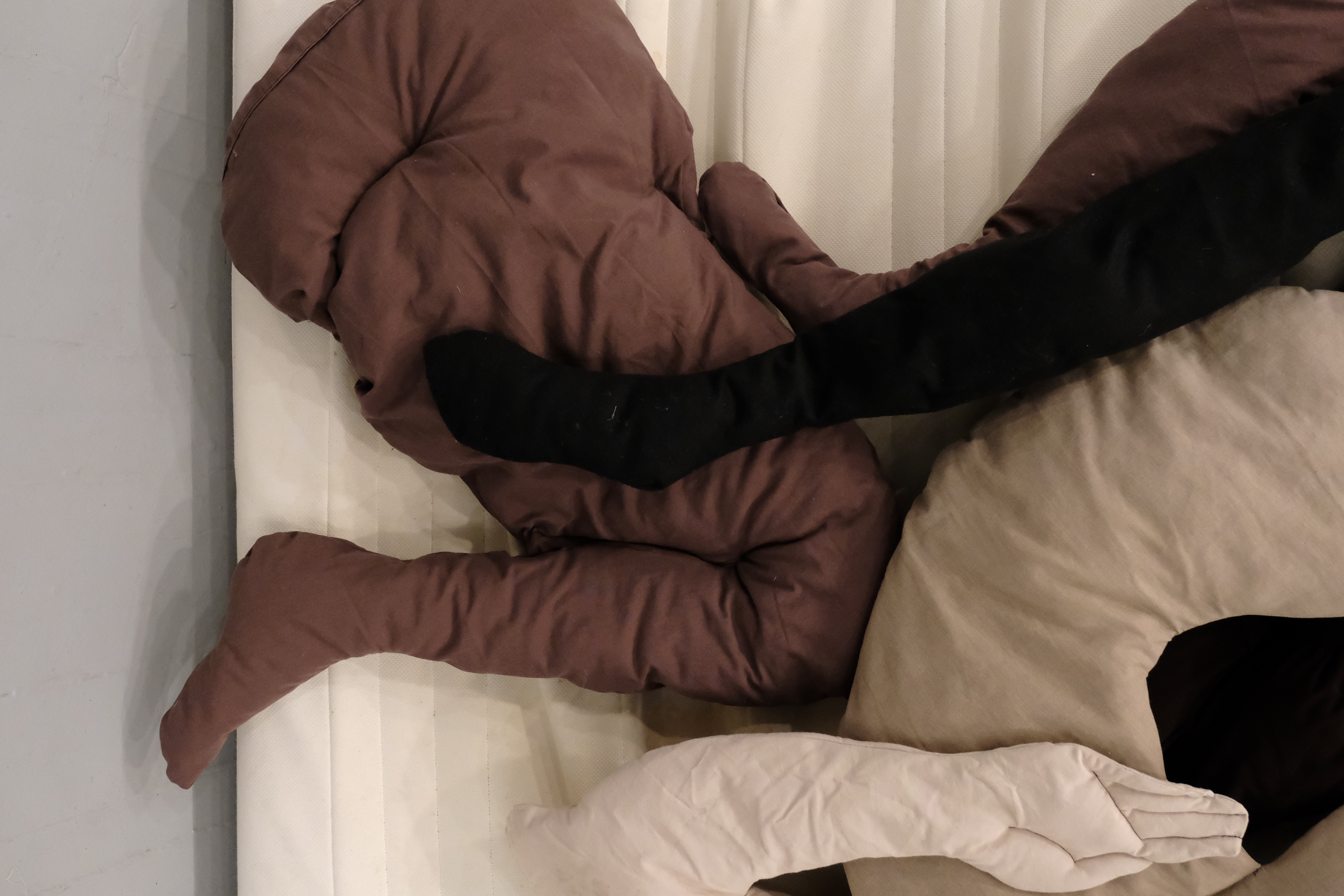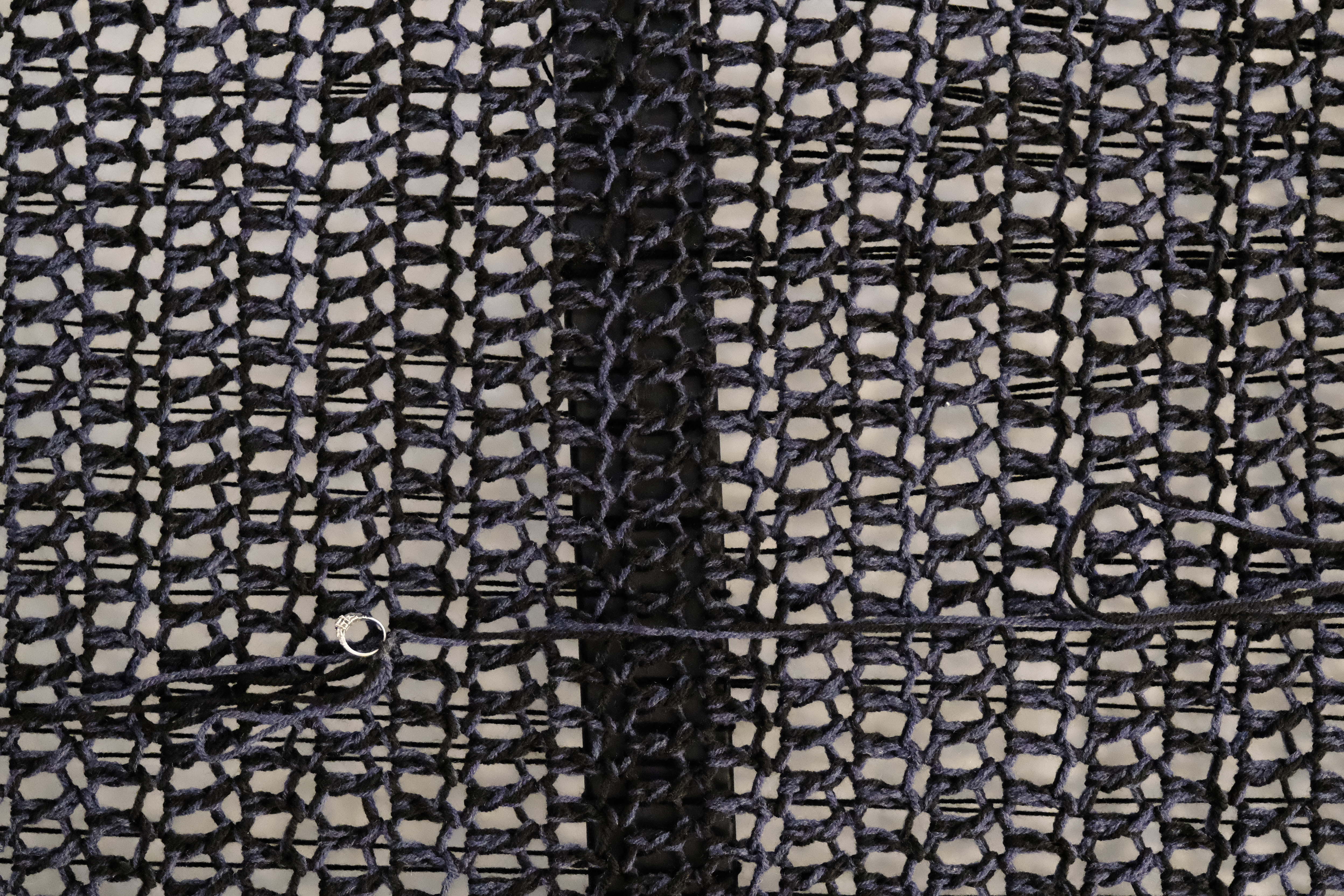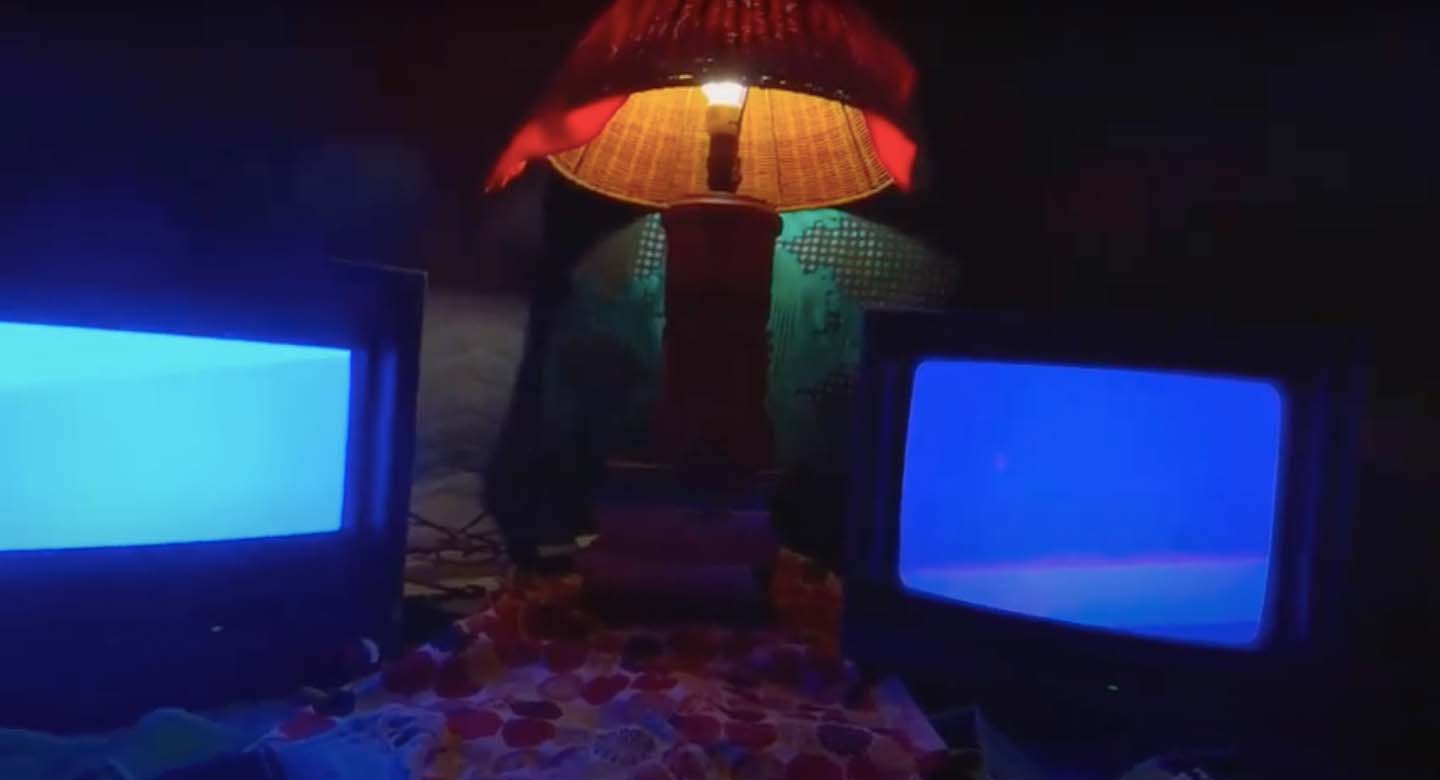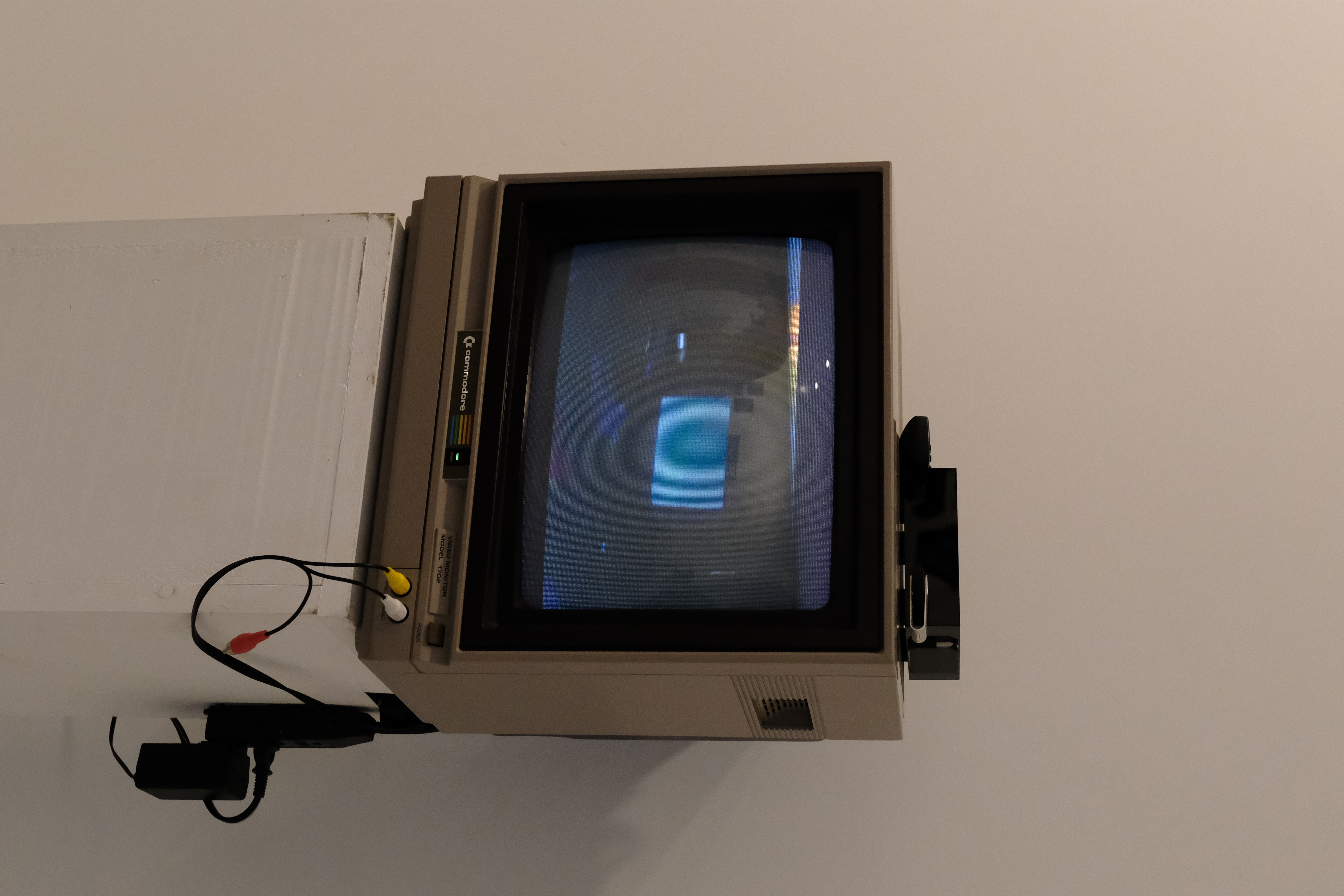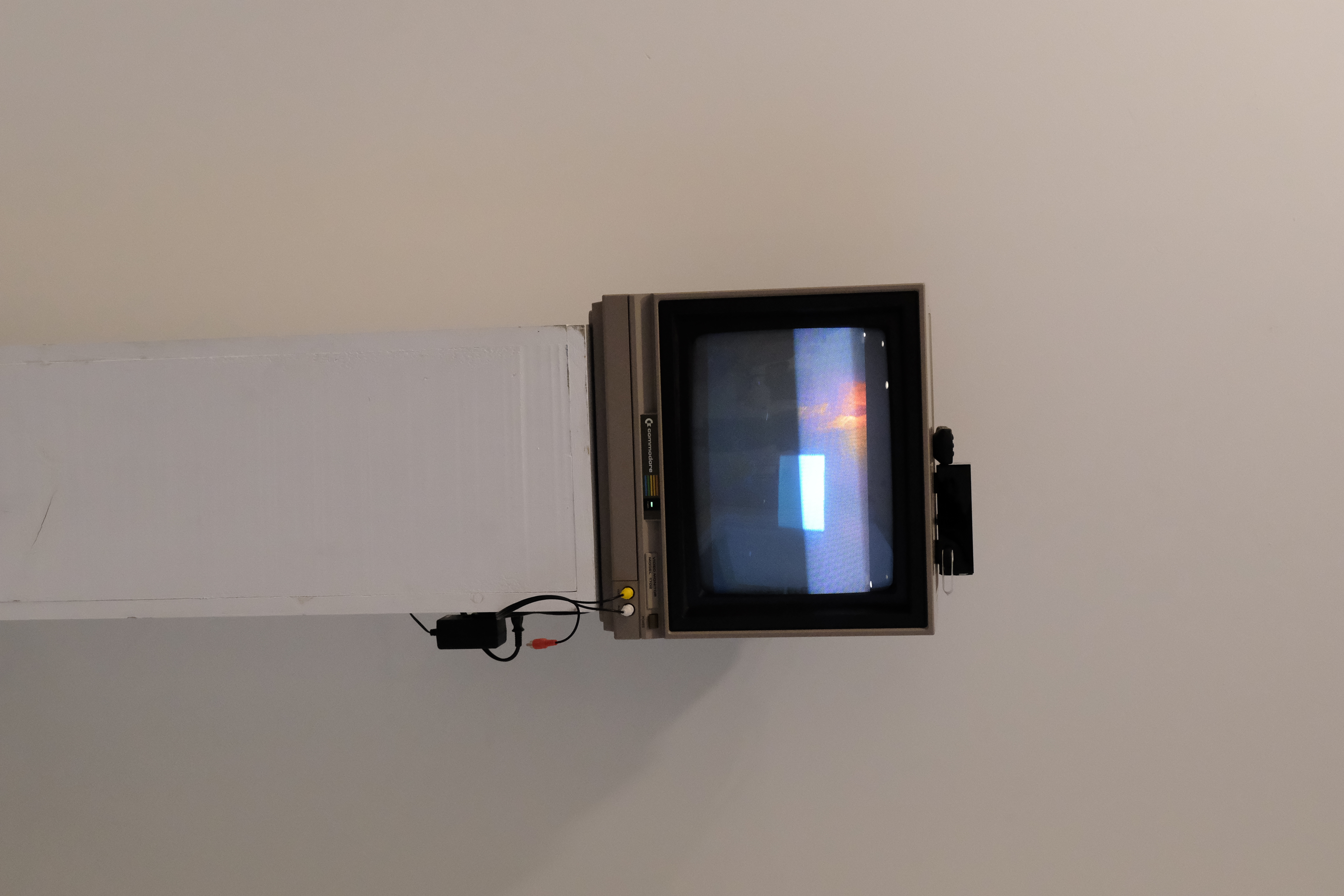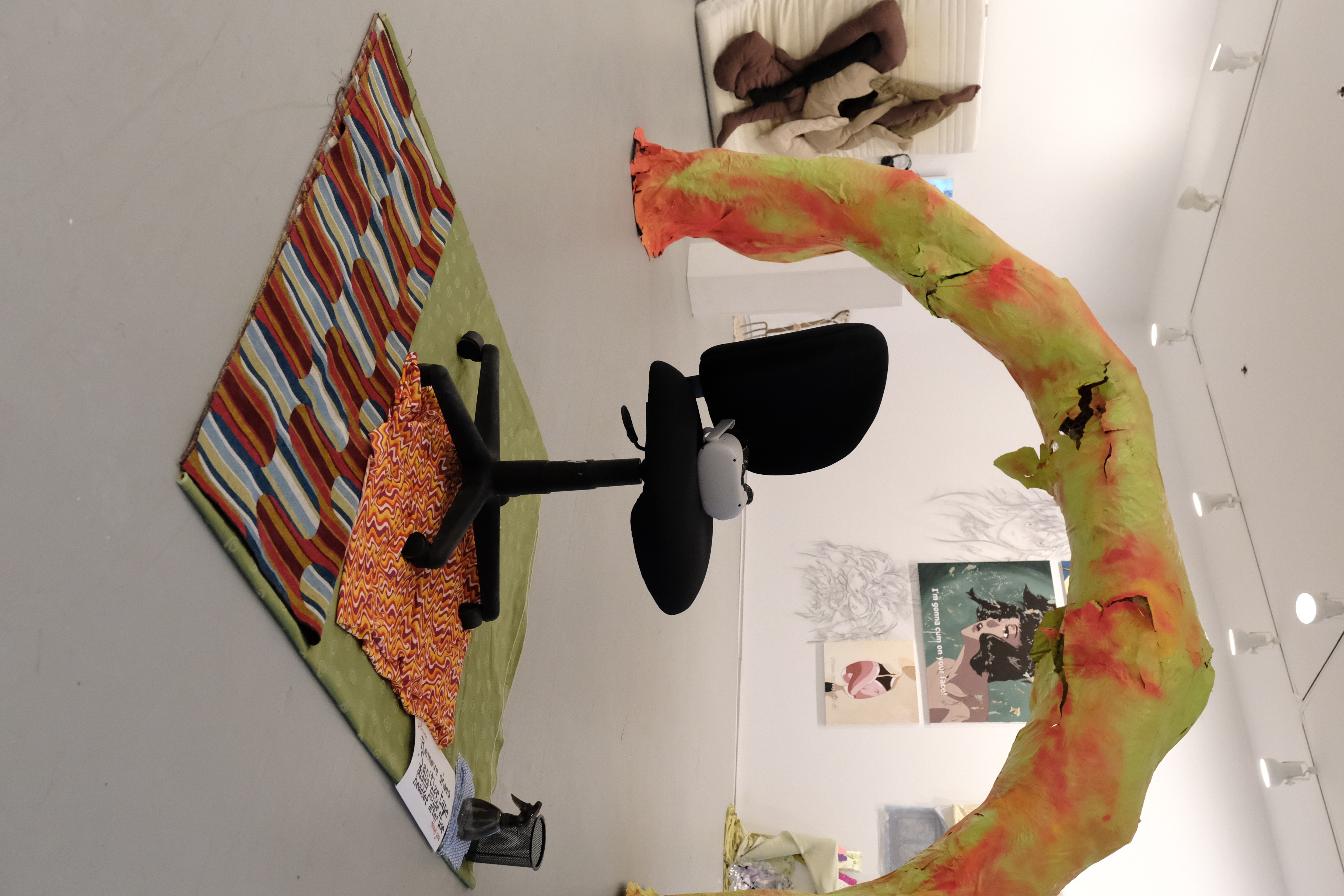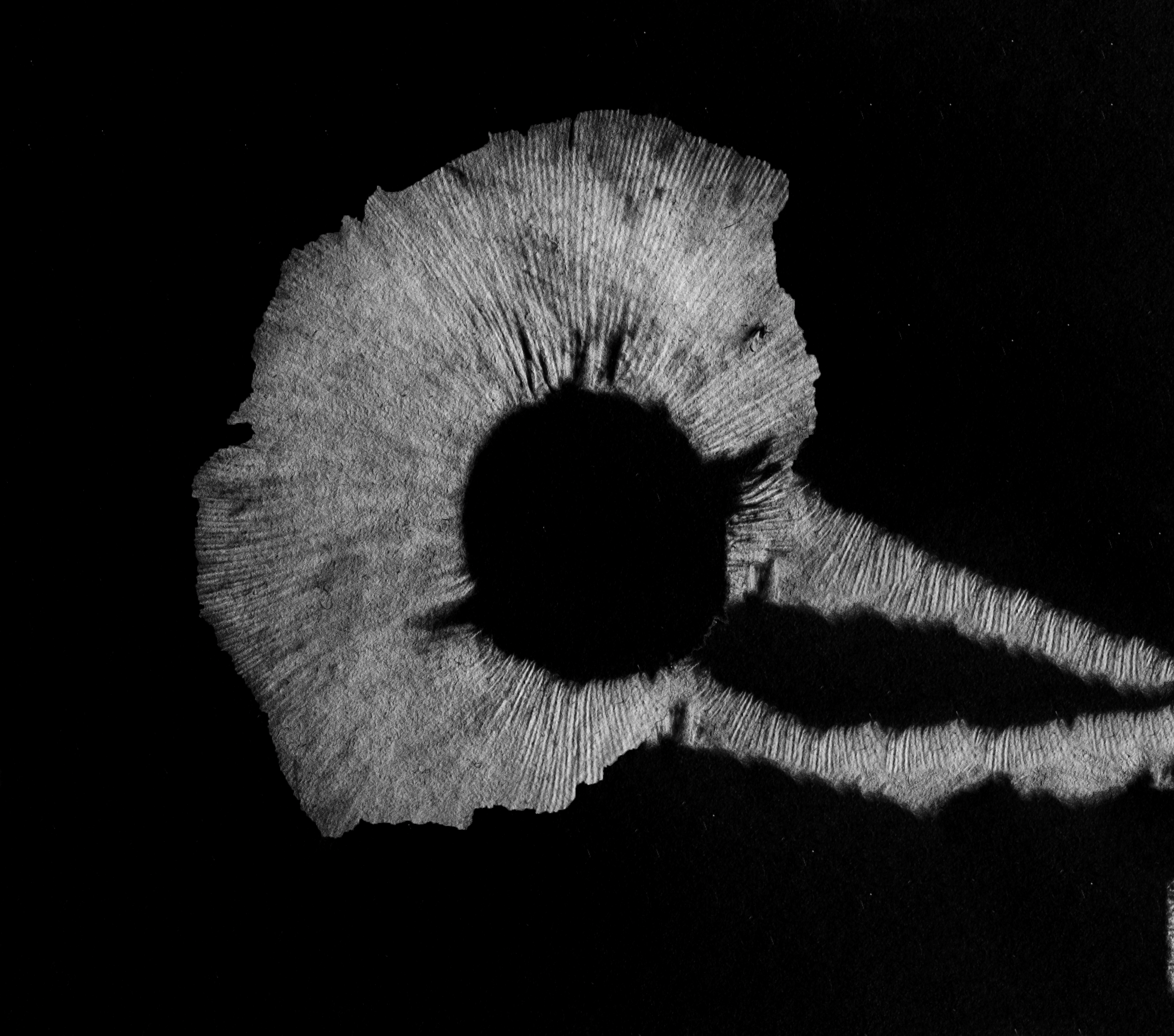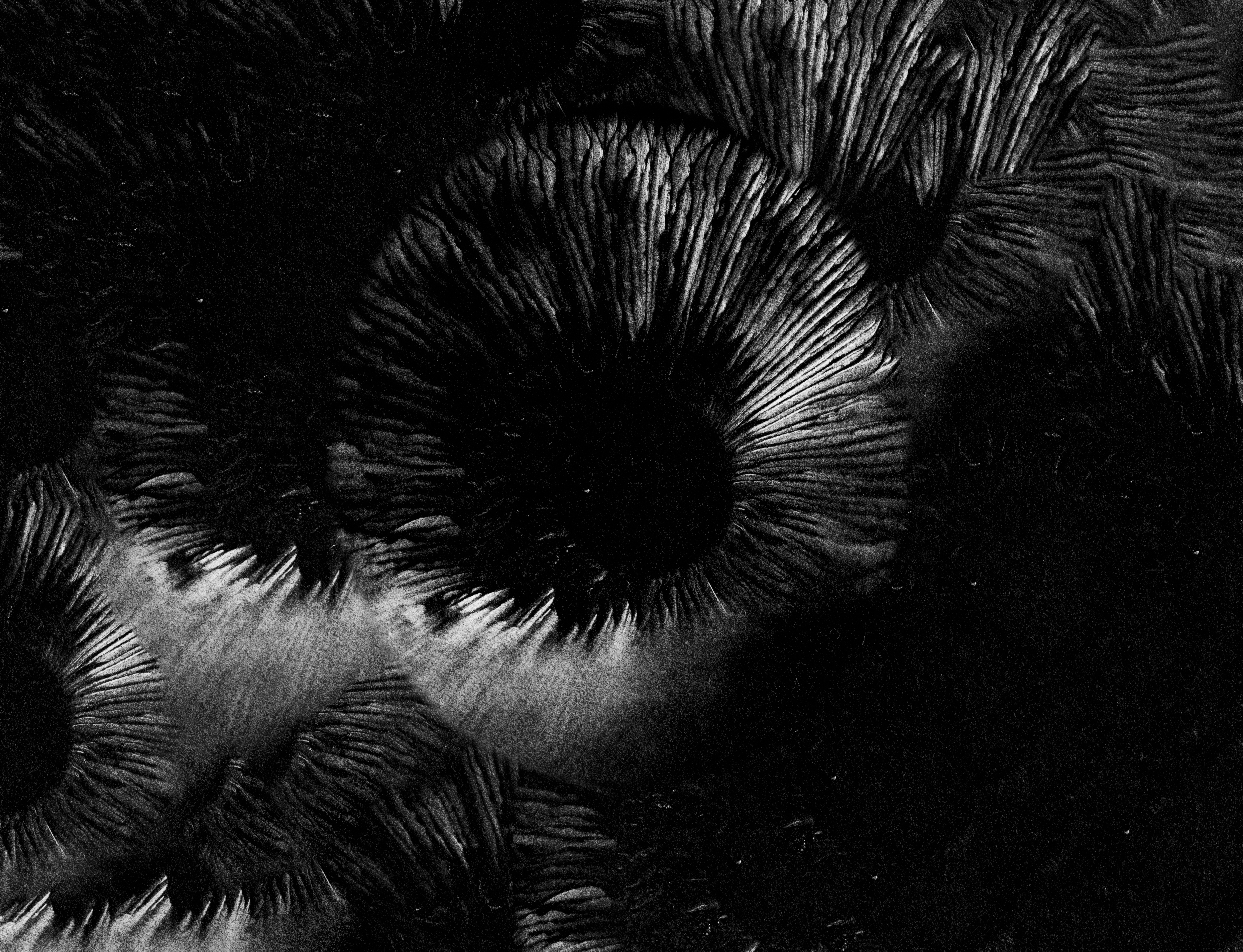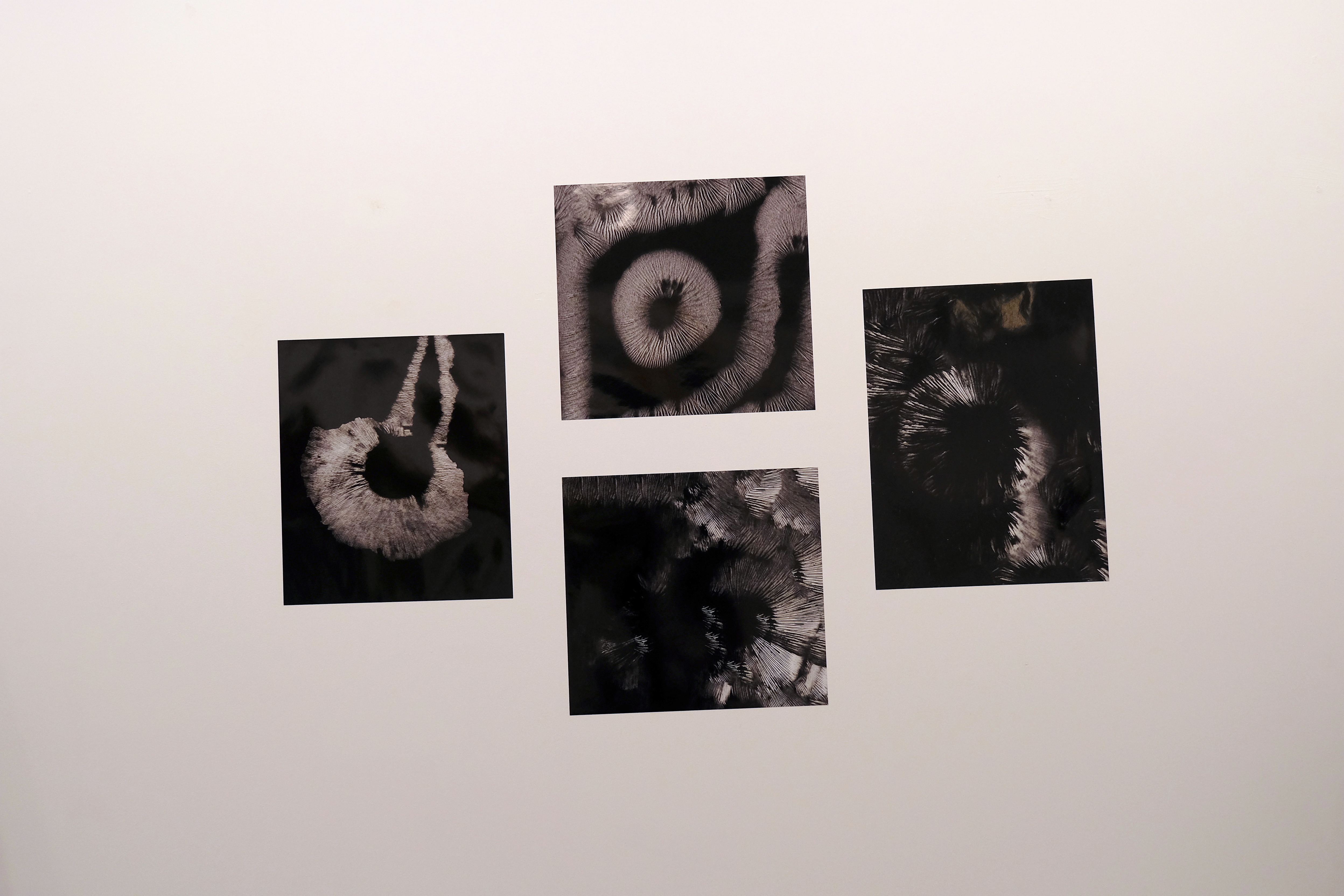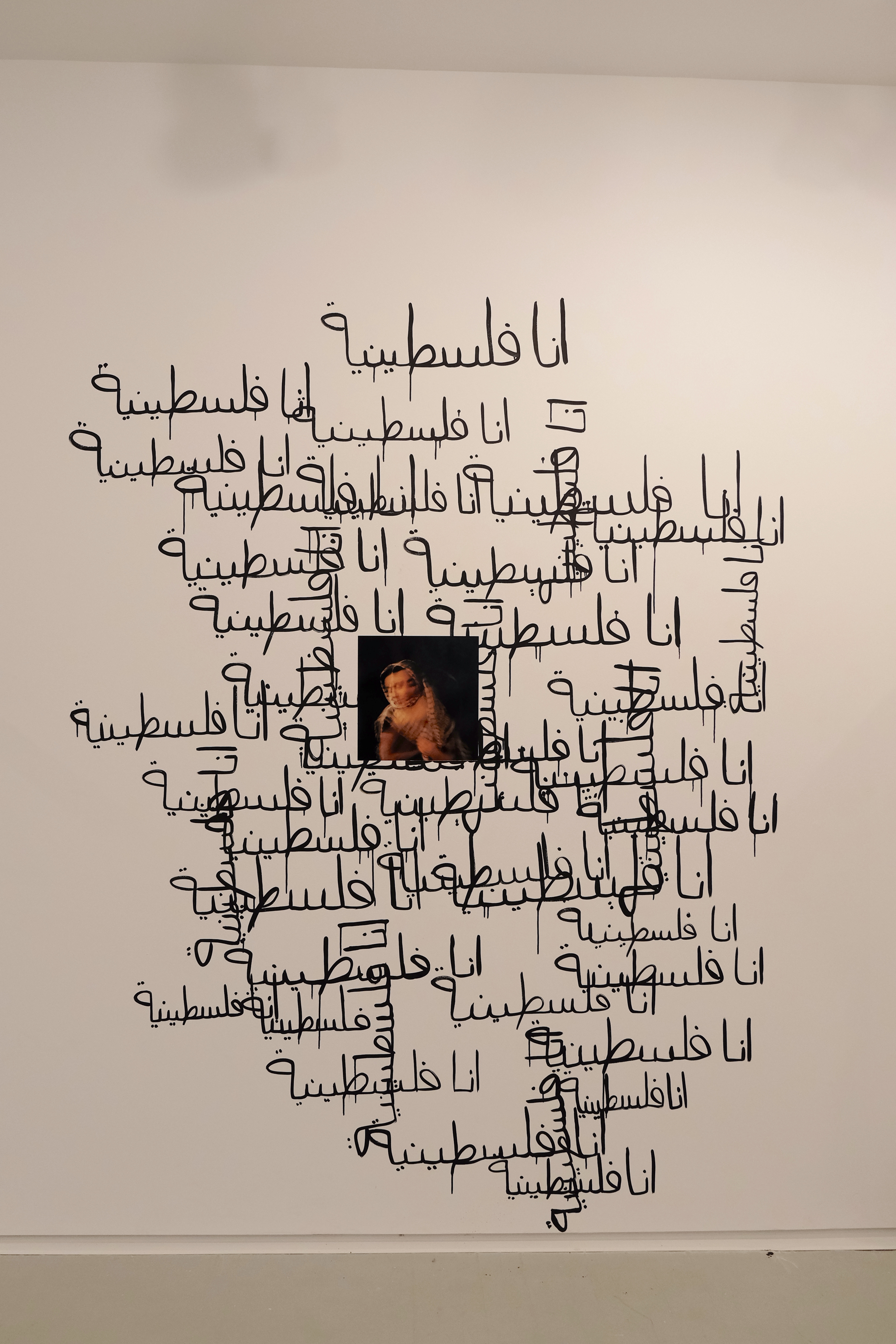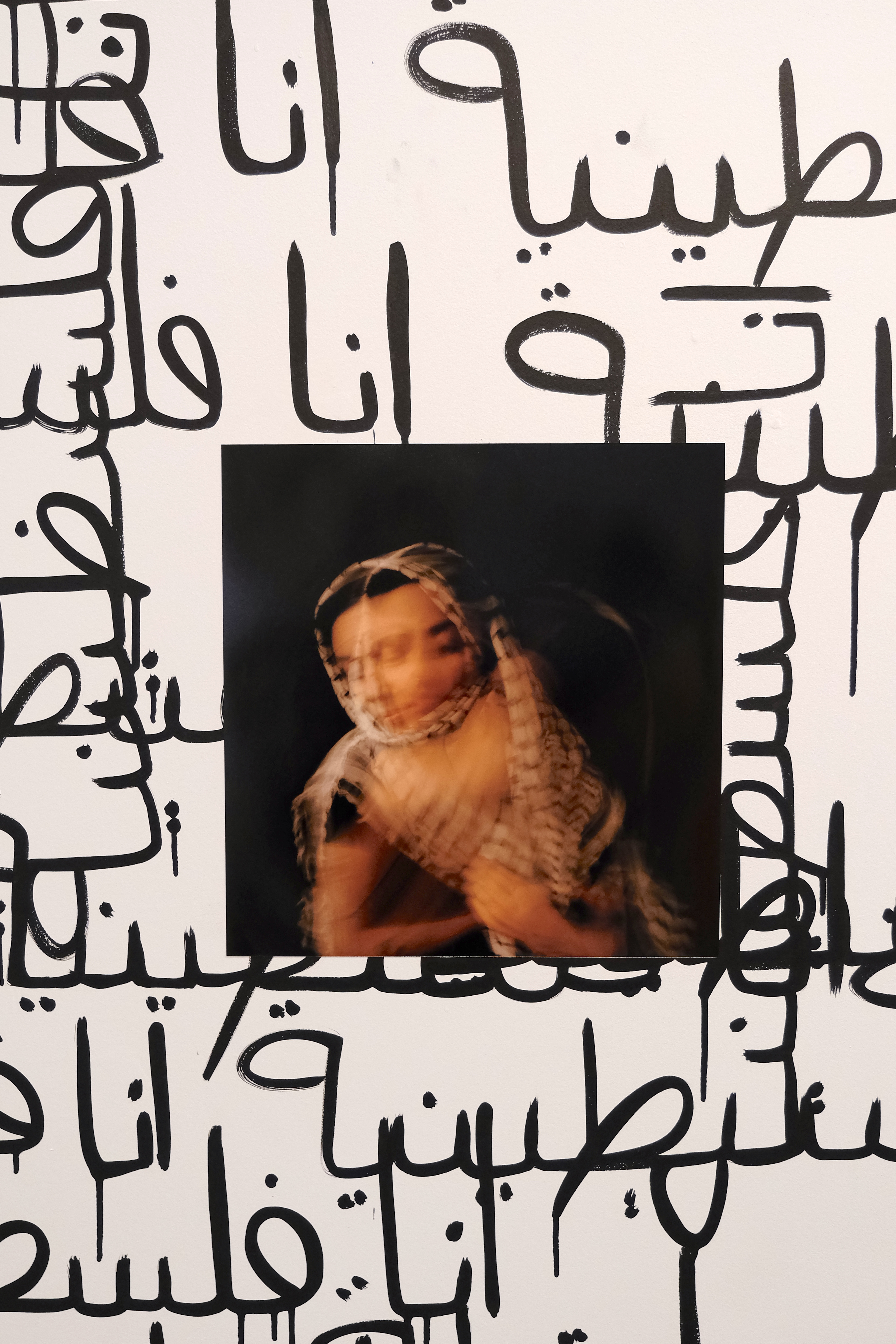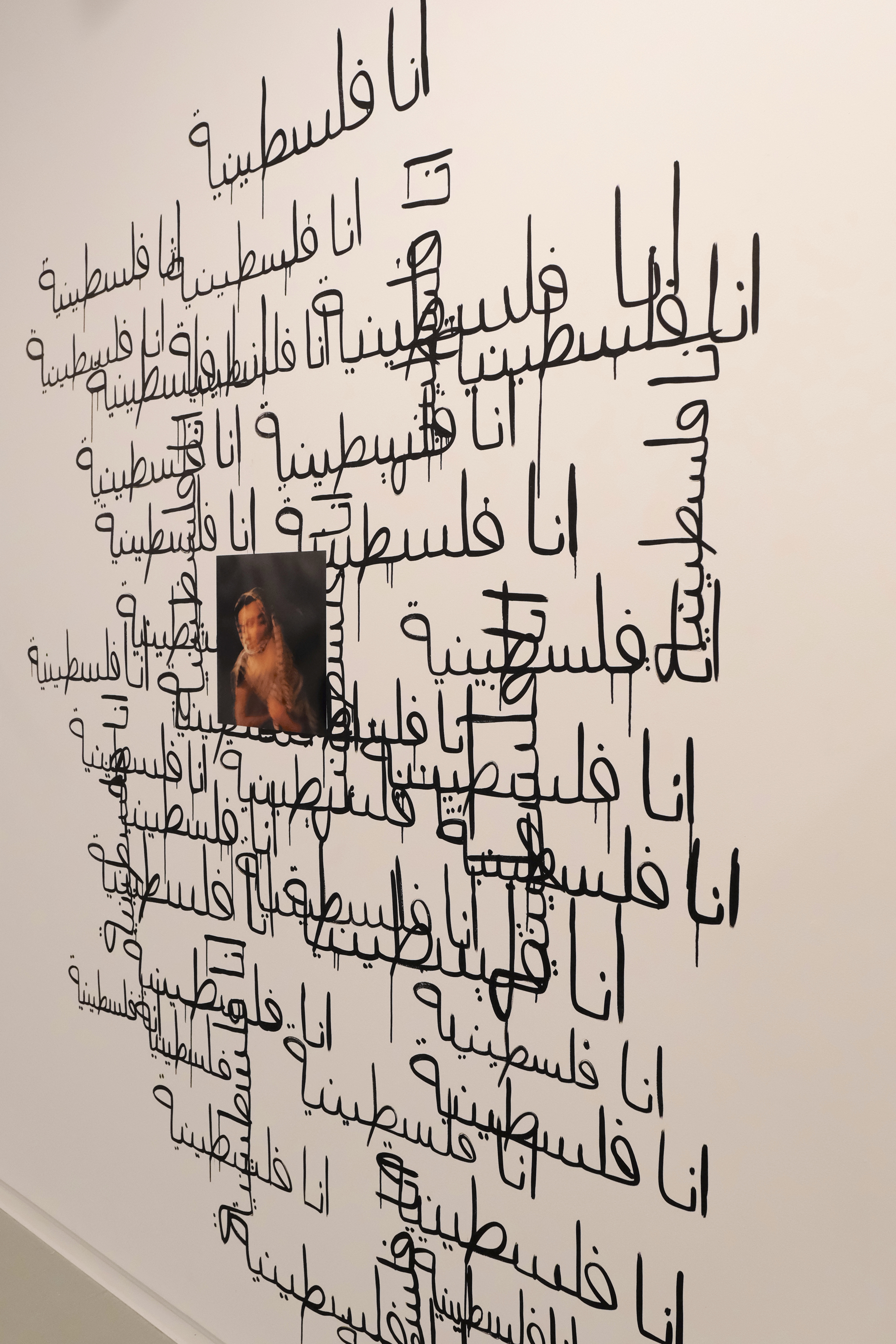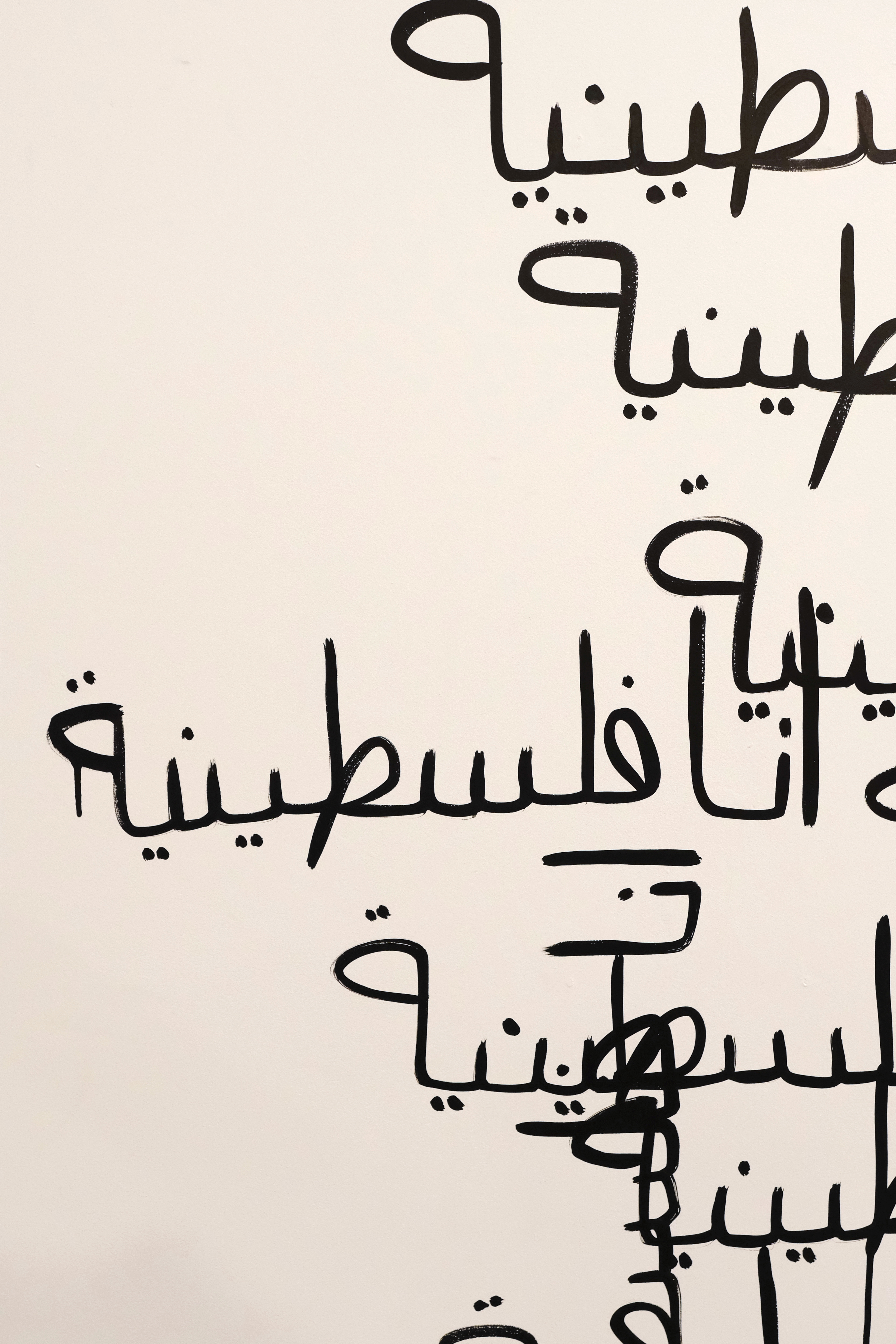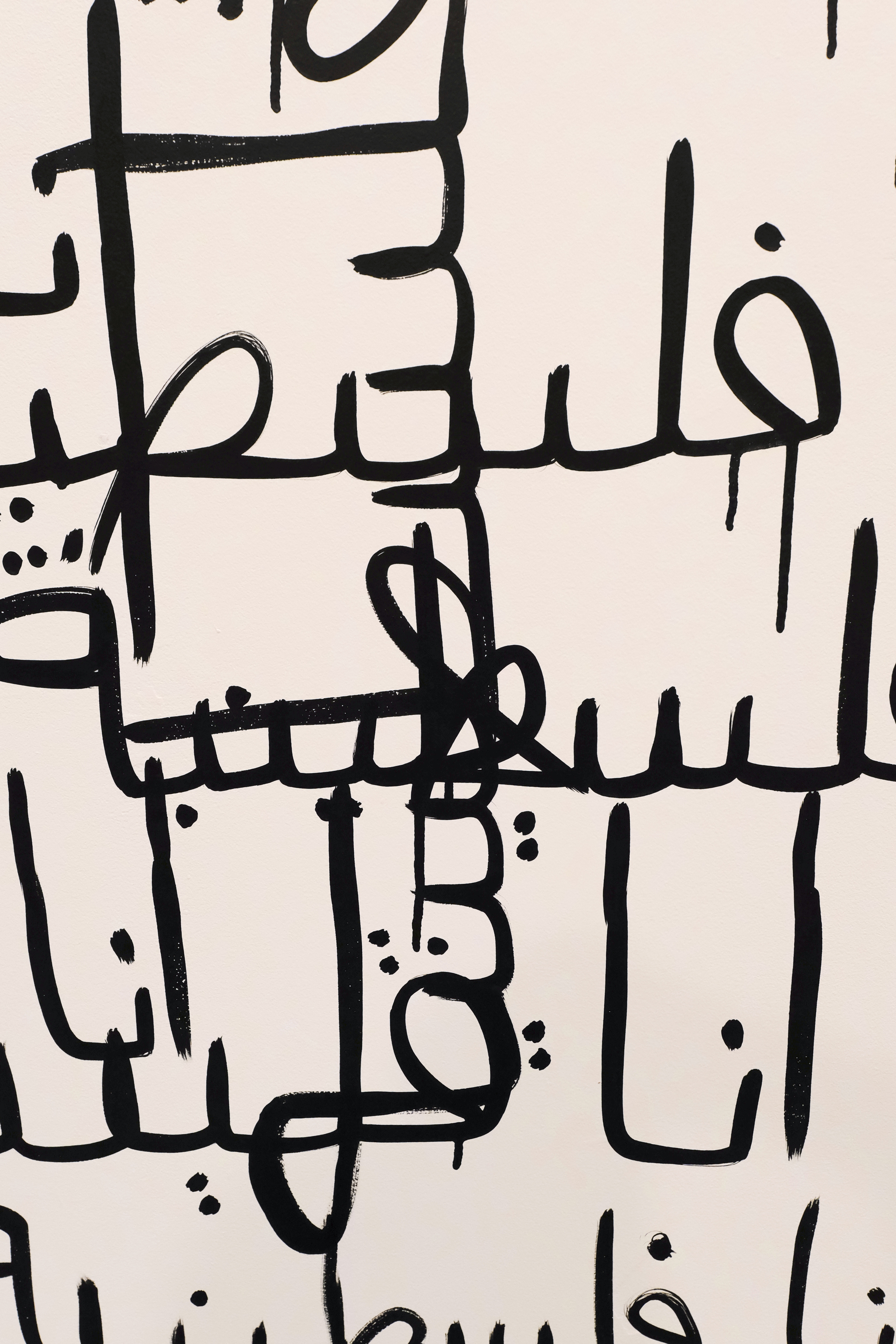When I hold a pencil or paintbrush, my hand mimics the posture of picking at my skin. The difference is that holding an implement is productive. It prevents me from further damaging and scarring my body. Making keeps my hands busy and provides a sense of relief. I am able to mark a surface other than my body. In this space, I am making for myself. It is the act, the performance that generates meaning. The act is grounding me in the present and in itself is a documentation of my time and bodily movements. The repetition, the compulsion to move my hands along my body, searching for something to hold onto, to pick at. The momentary relief brought by this action is addictive, but so is the substitution of my body for the wall in this work. I don’t need to be picking at my skin, I just need to be using my hands. And so I make to keep living. It is not about the resolution of any one piece, rather the commitment to material engagement and physical output that drives my practice.
To feel is to soothe. Engaging in repetitive body-focused behaviours are a coping mechanism in my daily experience of anxiety. These behaviours are not a conscious decision, but an automatic solution to a negative internal state. Picking at my skin, biting my nails, scratching my head, rubbing my nails with my finger, biting my lip, twisting my hands, grasping my body, scribbling in a notebook, rewriting notes, fiddling with a lanyard, teasing through my hair and feeling over my body for blemishes. My work is concerned with my relationship to my body. Living with mental illness means that I am often caught up in my mind, but creating something with my hands brings me back into my body.
My practice is largely concerned with painting, but has expanded to include more experimental drawing and most recently video. I am most interested in the visual impact of my work in relation to emotions, but have been thinking more about the interactive and textural dimensions. The work I have been producing has been centered on the now. My goal is to come back into my body in the present moment. My body is intuitive. I feel everything, hard. I feel it through my whole body. I need to manually regulate my nervous system because of my sensitivity to input from my environment. Every day I have been engaging in moments of mindfulness because my body needs it to function. I need to reset my breathing every hour. This work is for me, to honour the time and energy these practices occupy in my day to day. With a background in Psychology and more specifically cognitive neuroscience, I have become familiar with the concept of emotions as being three-factored. Emotions have a behavioural component, a physiological component and a feeling component. My work strives to make the connection between the many components involved in the emotional experience. This comes into my recent work as I have been regulating the physiological component through the employment of the mindful practices and documenting it.
This installation is called, “Three-factored.” Drawing on the walls with crayons, brings me back to my childhood, where many of the behaviours I engage in were formed. The material contrasts the seriousness of the text, which reads “Crying in private helps no one,” prose written by CAConrad from their (Soma)tic poetry ritual titled “DOUBLE-Shelter.” I resonated with this line of text because my work is concerned with bringing emotionality to the forefront. I find power in the vulnerability of creating work that is as open as the act of crying in public, which is why the text is then adapted into “Crying in public helps.” I use found objects such as the side table and cardboard box, which holds a sculptural work made from my tissues. In the video work, I document a behaviour that I have engaged in for as long as I can remember. Best described as petting my nails, this sensation of touch is grounding and I catch myself doing it and sometimes cannot stop. I realized that I have been ashamed of my anxiety-related behaviours because I was never taught about them or had them properly acknowledged. In giving this video space to exist and at a large scale in comparison to my hands, I am letting my hands speak for themselves.


